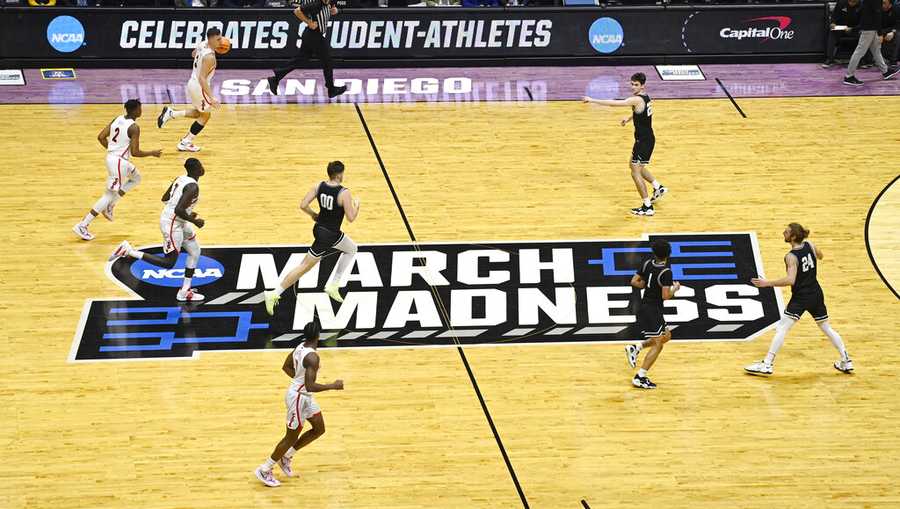March Madness is here. UConn, Purdue, Houston and North Carolina get top seeding in NCAA Tournament
Defending champion Connecticut, along with Houston, Purdue and North Carolina, are the top seeds in a March Madness bracket that started going haywire even before the pairings came out Sunday.
Of the four top seeds, only UConn heads into the tournament coming off a win. That played into the Huskies receiving the No. 1 overall seed. The other three top seeds lost in their conference tournaments.
Those were hardly the only surprises over the final weekend of hoops before the sport's main event hits center stage.
Unexpected titles placed teams like Oregon, North Carolina State and even Duquense, none of whom were projected to make the field, into the field of 68 via the automatic bid that goes to conference champions. The teams they beat gobbled up a handful of the 34 at-large bids, thus shrinking the number of spots available to teams on the so-called bubble.
The story of March Madness figures to look a lot like the story of the regular season that led up to it: a healthy cross-section of very good teams, few dominant ones and no strong consensus on who's the best bet to be cutting down nets at the Final Four in Arizona.
Defending champion Connecticut is a slight favorite to repeat, according to FanDuel Sportsbook, followed by Houston and Purdue.
The NCAA Tournament begins Tuesday with the First Four, followed by 32 first-round games on Thursday and Friday. The Final Four is set for Glendale, Arizona, on April 6-8.
As always, the more interesting discussions will be about the ever-shrinking bubble and who will be among the last to squeak into the field of 68 teams — 32 of which qualify automatically by winning their postseason conference tournaments.
A handful of unexpected results in conference tournaments — among them, North Carolina State winning the Atlantic Coast, Florida Atlantic losing in the American Athletic and Oregon winning the Pac-12 — meant highly rated teams would gobble up more of the remaining 34 at-large spots.
"This is my fifth year doing this — never have enjoyed Sat night because of how hard it is to select the final teams," Jamie Pollard, the athletic director at Iowa State who is on the committee, said on social media. "This year is harder than all my previous years combined. Just gut wrenching knowing some very good teams will unfortunately not be dancing."
Several weeks ago, Gonzaga was considered a bubble team, but a stretch of nine wins in 10 games elevated the Zags, and though they lost their conference tournament final to Saint Mary's, they will make the field for the 25th consecutive year. That would be one fewer than Michigan State, which is trying to reach its nation-leading 26th straight tournament — if it makes it in off the bubble.
As for the business of actually filling out those brackets — good luck.
Last year, Purdue came into the tournament as a favorite only to become just the second No. 1 seed in history to be knocked out in the first round. The Final Four consisted of UConn, Miami, Florida Atlantic and San Diego State — a grouping selected by only six of about 3.6 million in the NCAA's bracket challenge. None of those teams was seeded better than fourth.
Some believe this is the endgame in a sport that has been upended by roster upheaval across the board. The birth of athlete compensation deals and more liberal transfer rules has sparked an era in which coaches must concern themselves as much with assembling teams in the span of months as building programs over years.
So be it.
"We have another opportunity to compete for a championship," FAU coach Dusty May said. "And when every single team in the country starts their season — and usually the season starts almost as soon as the other one ends — your goal is to make the NCAA Tournament. There's, whatever, 360-some teams now and 68 get in. We're confident that we're going to be one of those teams that have a chance to compete for the biggest championship in our game, in our sport, college basketball."




